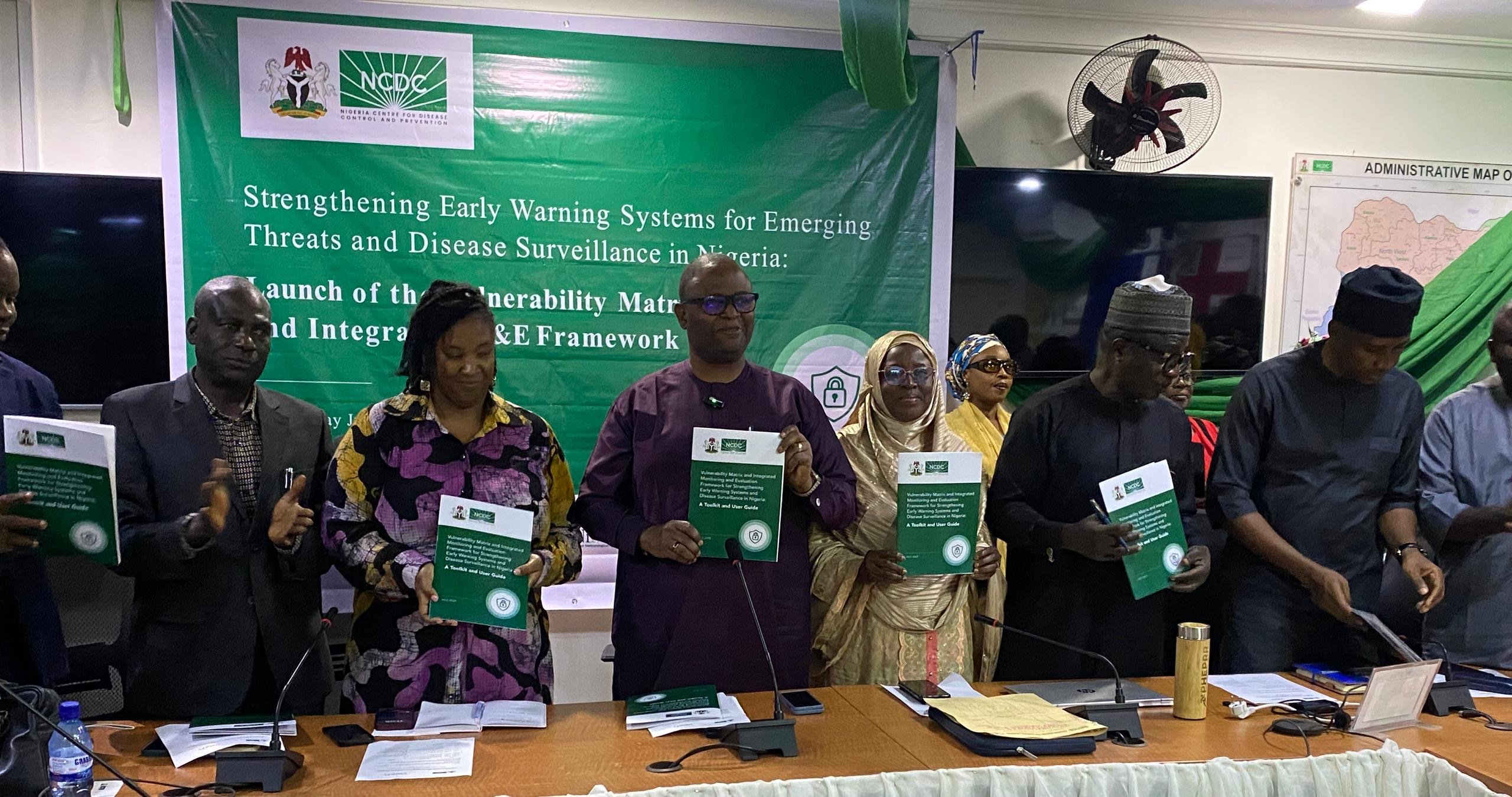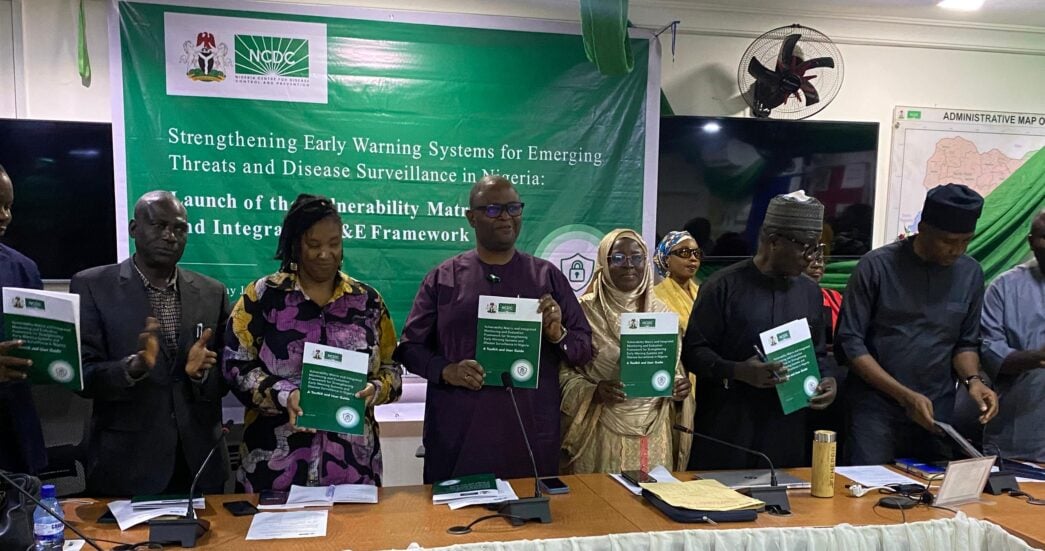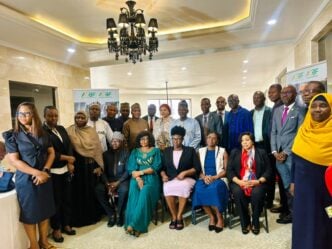The Nigeria Centre for Disease Control and Prevention (NCDC) has launched two new tools aimed at improving the country’s ability to forecast disease outbreaks and strengthen public health emergency preparedness.
The tools — the Public Health Vulnerability Matrix and the Integrated Monitoring and Evaluation (M&E) Framework — were unveiled on Tuesday in Abuja.
They were developed in partnership with the Palladium-led Data for Implementation (Data.FI) project.
Speaking at the launch, Olajide Idris, director-general of the NCDC, said the tools are designed to identify and monitor areas and populations most vulnerable to public health threats, including infectious disease outbreaks, climate-related disasters, and other emergencies.
Advertisement
Idris, who was represented by John Oladejo, director of special duties at the NCDC, said the initiative aims to close long-standing gaps in Nigeria’s early warning and surveillance systems.
He said the vulnerability matrix was developed using the STAR approach — situation, task, action, and result — to identify and prioritise risks, including human and zoonotic diseases that have epidemic or pandemic potential.
The toolkit also considers non-infectious public health events like flooding, which disproportionately affect vulnerable populations.
Advertisement
The framework was piloted in Nasarawa state and the federal capital territory (FCT), and refined with feedback from users during the pilot phase.
Idris said this feedback helped to improve the functionality of the tools, making them more responsive to real-world conditions and threats.
The NCDC director-general added that the new system brings together data from various sources — human health, animal health, environmental health, and climate — to forecast outbreaks and guide early interventions.
“With these tools, we are laying the foundation for a comprehensive early warning system that can help us forecast and prepare for outbreaks, rather than merely reacting after they happen,” Idris said.
Advertisement
The project was coordinated with support from relevant ministries, departments, and agencies, including the ministries of health, environment, and livestock development; the Nigeria Meteorological Agency (NiMet); the World Health Organisation (WHO); and Resolve To Save Lives.
Jemeh Pius, health assistance coordinator at the US embassy in Abuja, said the initiative responds to gaps identified during the Global Health Security Joint External Evaluation conducted in 2023.
She said the US government, through Data.FI, supported the development of the tools in collaboration with the NCDC.
“With strong leadership from the NCDC, this process has resulted in the development of a vulnerability matrix and M&E framework that will enhance real-time detection of threats and improve coordinated responses,” Pius said.
Advertisement
“This will help Nigeria proactively manage outbreaks and offer a structured way to anticipate, track, and respond to public health emergencies more efficiently. It builds a more resilient public health system and helps mitigate the risk of future pandemics.”
Otse Ogorry, country director of the Data.FI, said the new framework enables health authorities to link climate and environmental changes to likely health impacts.
Advertisement
“It’s part of the early warning system that tells us that if there is, for example, increasing rainfall, potential disease outbreaks can happen. So, this document helps us increase the framework to see what can happen,” he said.
“If there is a heat wave, what potential disease outbreaks should we envisage? This framework and this document help us to position ourselves as a country to know what can happen and when it can happen.”
Advertisement
Ogorry added that the document would be periodically reviewed to keep pace with changing trends and challenges in public health.
The NCDC said it expects the tools to significantly enhance Nigeria’s capacity to detect and respond to emerging health threats, while also informing decision-making for health policies and interventions.
Advertisement












